Wasteland Ventures (Fallout) #2 – Quest Structure
November 30th, 2010
Since the last instalment I’ve made considerable headway through Fallout. With the water chip returned to Vault 13, I’m off to find the cause of the super mutant plague. Having made my way through Junk Town, The Hub and Necropolis, I’ve noticed a pattern in the quest structure. Quests, which also act as major story arcs, can be mapped out as follows:
Pre-quest Context
The pre-quest context happens before the actual quest begins. The game will draw the player’s attention to a specific issue in the surrounding area through dialogue with NPCs, access and in-access to certain points on the map, visual markers, in-game events and so on. These indicators can only be triggered through the player’s interactions which themselves fit the real world context of investigation (talking to people, asking questions, snooping around). As such these basic mechanics (talk, walk and view) work well with the devices that establish context. In this way, the mechanics make the player’s awareness of the populace’s social troubles (which necessitate quests) quite normal and life-like.
Quest Trigger
One of these indicators will prompt the quest to begin. So maybe when talking to an NPC, they will call on the player to help them or entering an area will cause some characters warn you about a current predicament.
Contacting With The Source
Most major issues in the wasteland that act as the backdrop for quests can be attributed to faction leaders exerting their force on small minorities. At some stage you’ll need to make contact with faction leaders who often remain tucked away in their fortified hideouts.
At this stage Fallout presents the player with a fairly open slate. The objectives of the quests, which usually fall along the vague lines of “stop this person from disturbing our way of life” allows for multiple solutions that fall in accordance with the player’s SPECIAL statistics and skills. The statistics directly affect what tangible abilities (and their success rates) the player can employ in such situations and throughout the game at large. The chart here identifies the tangible outcomes of the player’s primary SPECIAL stats, while this one here correlates to the player’s skill system. But let’s take some more practical examples. Say, if the player has high intelligence and perception, then they will have more dialogue options and can therefore persuade the aggressor to change their stance. If the player has good strength then they could simple barge through the fortress and blow away the leader and their goons. Maybe the player has invested in a skill, like stealing, and can simply take what is needed without confrontation. Every situation allows for more than one possibility (at its most minimal violent and non-confrontational choices), and maybe even a few you’d never even realise. (Tricking Gaul into thinking that you’re his father is a good example).
The bases for the factions are designed in such a way as to create a risk/reward system pertinent to player’s potential approaches (read: their best and most usable skills). Guards cover the entrance of bases, making it difficult to flee if one decides to attack the leader. Similarly, if the player steals and gets caught, they’re immediately in great danger. Backdoors are often included for those who can sneak their way through, yet failing to crack the lock can foil the entire plan before it even begins.
Branching
Based on the player’s actions, there may be a point where the situation branches (almost a given when 2 factions are involved) and the player can choose to support the quest giver or the opposing faction. This is where most of the moral ambiguity finds its way into the context. Requested assassination attempts are a common example. After being asked to remove a certain individual, on contacting with that individual, you may warn them and, in turn, they may request that you remove the initiator instead. My example below along with the recommended quests in the conclusion all feature this design.
Completion
Simple enough, the quest is completed and the player receives some kind of reward.
Consequences
Due to the savage nature of the wasteland, the benefits that players get from a quest is usually to the detriment of somebody else and this, more often than not, creates consequences that affect play. The best examples being that certain areas becoming inaccessible or clan members automatically launching into an assault when sighting the player.
With the quest structure layed out (and frivolous commentary added), we can now apply this model to one of the quests.
Junktown, Gizmo and Killian
Overview: There are two main players in Junktown, Killian Darkwater, grandson of Junktown’s founder and local store owner who respects the rules of the community and Gizmo, an overweight casino tycoon who employs the neighbouring Skulz gang to help him with his dirty work. Both men are at odds. Killian wants to restore proper law and order to Junktown which means the dissolution of the Skulz gang and removal of Gizmo, while Killian’s holding up the expansion of Gizmo’s flourishing empire. Killian has the local police force on his side, but lacks the evidence to lock Gizmo away. On the other hand, the bottom half of town near Killian’s store is well protected, making it difficult for Gizmo to make a hit on Killian.
The videos below are of the quest playing out, a text version can be read here too.
Starting at 5:20 in this video (there’s an overview of the area first).
Pre-quest Context
All of that information just above is communicated to the player in several ways, here are some examples:
- the player isn’t allowed into Junktown with a weapon holstered (law enforcement)
- the player may not be allowed into Junktown at night (law enforcement)
- if the player aggravates the police, they will open attack (combat)
- there is a town jail (sight)
- local police force warn the player of Gizmo and the skulls (text overlays (representing dialogue made out in the open) during gameplay; perception)
- further clarification if the player initiates dialog with these people (speech)
- similar speech can be gleamed from the Skulls and NPCs in the upper areas (Gizmo’s town; speech)
The primary piece of context is the assassination attempt on Killian which plays out entirely in-game. An unassuming NPC (Kenji) will walk into Killian’s store when the player is in the vicinity and shout out “Gizmo sends his regards” in an on-screen text display before proceeding to fire at Killian. At this point, if the player chooses to help Kenji take out Killian (and therefore align with Gizmo) then they’ve already passed the Quest Trigger and there is no Branching phase. (This path brushes over the meat of the quest). The player can also choose to let Kenji be killed, in which case nothing happens, or they can attack Kenji at least once (ie. defending Killian). The last option leads to the Quest Trigger.
Quest Trigger
The assassination attempt is the breaking point for the two sides. After saving Killian, he will ask the player assist him in gaining the evidence needed to bring down Gizmo. His request activates the quest proper. If you turn him down then the asshole throws you in jail and heads off with some officers to take down Gizmo by himself which is pretty harsh considering that you just saved his life. This path ends the quest.
Killian requires the player to either voice record Gizmo saying something incriminating with a supplied tape recorder, or to plant a bug on Gizmo.
Contacting With The Source
To spring Gizmo, you obviously need to be near him, right? So, you make contact with him at his casino north of Killian’s shop. You can avoid any communication with him by just planting the bug, which therefore doesn’t allow any branching in the quest structure. If the player records Gizmo’s voice on tape, then the easiest way to have Gizmo say anything incriminating is to tell him that his previous attempt (Kenji) failed and then make a proposition that you’ll make the hit and get it done right.
Branching
After obtaining the evidence, the player is left with 2 objectives that they can fulfil: give the recording to Killian or kill him and give him dog tags to Gizmo as proof.
Completion
Gizmo will either be sprung and Killian will let the player take something for free from his shop or Gizmo will hand over a healthy amount of bottle caps (currency) as a reward for killing Killian.
Consequences
Option A) You give the evidence to Killian which later opens up a mission where you can kill Gizmo with other NPCs. In which case, his casino will be deserted and the local law enforcement will be happy with you.
Option B) The police populating the bottom half of the screen will turn on you for betraying Killian. (Fortunately they have a lot of armour which can be auctioned off for a handsome price). If you remove all the officers including the gatekeeper, you are free to enter Junktown anytime you please. Gizmo won’t give a rats about you. You can always kill him off too and clear him of loot.
Conclusion
As you can probably tell, there are opportunities that arise in the quest which circumvent parts of the structure I’ve laid out here and that’s to be expected as the quests are quite flexible. The questing structure I’m proposing isn’t a fixed model, but instead a complete model of what a quest looks like when played out to its maximum extent. It’s a mark of quality that Fallout allows the player to intervene with this model, offering solid interplay at every divergence.
If you’re interested, the quest with the mutants, Set and water supply at Necropolis and the quest in Boneyard in dealing with the Blades, Gun Runners and Regulators are other meaty examples that flesh out this model to its fullest.
Doom Resurrection – Additional Comments
November 27th, 2010
A follow-up to my previous article on mechanics.
Tracking
When enemies enter the screen space, the viewpoint tracks and follows them, giving the player the most advantageous angle to shoot them. At times, when a second cluster of enemies enters shortly after another, the player’s view will shift from the first cluster (which they’re probably still shooting at) to the incoming cluster throwing off their aim. There is a prime example of this in the Abaddon stage shortly after entering the second atrium.
Interplay
On-rails shooters, even more so than FPS games, lack interplay at a fundamental level and Doom Resurrection is a core example of this issue. Other games in the genre have combo systems, draw-back damage, destructible parts of the environment (which lead to branching routes), strategic dismemberment and other devices that create more back-and-forth interaction. Doom Resurrection is completely void of such amenities, leaving a very stripped down experience. The player engages with the game by shooting bullets into sponges and that’s all. So despite the portable-friendly nature of the game, even in short bursts of play the shooting tires very quickly.
Enemies are a pretty typical mix of walk-to-the-screen-and-slap-you types and stand-back-and-throw-shit-at-you types. Bosses are simply larger versions bogged down in dead space (ie. where the player does nothing) as the player points and unloads their clip, doing nothing for a few seconds.
Variation
The wonderful thing about the first level of Doom Resurrection is that by the time you’ve got to the end, you’ve basically seen all the game has to offer, besides some change in décor, different combinations of the same run-of-the-mill monsters and an unsurprising loadout of weapons. Each of the 8 levels are simply different arrangements of the same core, uninteresting elements.
Doom Resurrection – Mechanics Analysis
November 24th, 2010
You could probably sort my iPod app store purchases into a few core groups: platform-specific games with a strong reputation (Spider, Space Invaders: Infinity Gene, Rolando, Eliss), games made popular on other platforms which are cheaper and run well on the iPod (Ace Attorney, Cooking Mama, Diner Dash, Mr Driller) and games which are iPod exclusive instalments of major game franchises (Assassins Creed 2, Doom RPG, Wolfenstien RPG). As you might have guessed Doom Resurrection belongs in the last camp.
Resurrection is one of those games that attempts to push the technology of a portable platform beyond what is usually expected of it, and while Epic’s Infinity Blade kinda makes it seem redundant now, it doesn’t hinder the fetish that I have for these types of progressive portable games. Whether the design can match the technical prowess, we’ll see—but for now, here’s a trailer.
Overview
Doom Resurrection is an on-rails shooter using scaled-down assets from Doom III. Movement is automated, leaving the player to deal with hell’s minions. There are no branching paths. Resurrection is completely linear. There are a total of 8 levels in the main single player mode, a challenge mode with a variety of set objectives to complete and a maps mode which has an additional map (maybe they were planning more DLC maps?). On completing a level the player is given an alphabetic rank. The interface is as labelled.
Primary mechanics
Aiming
Aiming is done by tilting the device and feels surprisingly natural. There are 3 sensitivity settings and all feel very comfortable to play around with. The fact that you’re tilting the same screen that you’re focusing on is inherently problematic, but this is just a common design issue with the device. I honestly don’t think that there’s much that could be done to remedy this. Touching the individual enemies to shoot is an alternative, but that would obscure the view even more than a tilted screen or glare.
The reticle is calibrated at the start of each level and can be recalibrated easily by pausing the game, moving the device into a comfortable position and tapping the calibration option which resumes play and recalibrates the device.
Shooting
Shooting is as simple as tapping a button in the bottom right corner. There’s no external factors that affect the shooting.
Secondary Mechanics
Reload
Item Pick Up
Health packs and munition can be picked up off the ground by tapping them. I mentioned just before that this could obscure the player’s view if used for shooting, the same is true for picking up items. The developers cleverly avoid this issue though by sequencing item dumps in-between instances of shooting so that the player is never in danger when they might be blocking their own view. This sequencing helps to break up the straight sections of shooting as well.
Occasionally, item drops will be backgrounded on-screen during enemy confrontations. In these sequences, it’s up to the player to listen out for enemy cries which indicate arriving swarms. By following the rhythm of arriving monsters, the player can spot moments of downtime and nab the floating goodies at their most opportune. Otherwise, trying to grab items while foes are around will effectively offer them a few free pot shots.
Each instance of shooting has an allotted quota of time before, once the player has cleared the screen, either the next set of ghouls come forward or the game progresses to the next instance. The longer the player takes to down the monster, the more they cut into this time frame to grab items. In this case, these item incentivise fast and accurate shooting. My description supposes that this was a conscious design decision, however I’m doubtful, because if it were then it would have been more effective to replace the standard ammo and health packs with the “hidden secret” items which, to semi-subversion of my argument, are ammo and health pack hidden in breakable boxes. The difference being that they add to the player’s rank at the end of the stage—displayed on the tally of conditions.
Actually, using the pre-existing “hidden secrets” is a bit of a waste as well. Changing them out for something like special tokens that act as currency for unlocking additional maps or bonus goodies would give the player much more incentive to get the maximum use out of the play mechanics. And anyways, the “hidden secrets” are hardly a secret given that they’re in every breakable box in the game.
Dodging
Enemies which look a bit like re-deads from Zelda (along with some bosses) throw fireballs at the player which they can dodge by tapping the “dodge” button in the bottom left. This move can also be used to avoid physical attacks too. The implementation of this mechanic is a little clumsy.
What throws me about dodging is that the quickness of the dodge makes it very immediate, drawing the player in and out of the action for a brief moment. This breaks the player’s sense of where their cursor’s located due to the way the way they physically re-orientate the device during these moments of confusion as the viewpoint shifts. So when the screen does return to its original position, the player must re-adjust their reticle quickly so that they can kill the re-dead look-a-likes before they toss another fireball.
In the later levels, Resurrection throws more than one of these enemies on screen at once, sometimes they even add zombies and other player-approaching nasties. As you can imagine, these moments are a literal mess as the player must re-orientate their reticle while other enemies are either walking towards them or scratching their face off.
At least the nature of this mechanic creates a strategic dynamic. Even if that strategy is to simply clear the most annoying monsters first.
Cover
Roughly a fifth of all shoot-outs involve taking cover against grunts. The on-screen button for covering is the same as dodge, so, seemingly as not to confuse players, the stages tend to privilege one mechanic or the other.
The main difference between the two is that the player holds their position while in cover and the cover button must be pressed to draw the player back out into the open. Yellow circle indicators support the cover mechanic by informing the player when the enemy has cleared their clip (the indicator shrinks as their ammo decreases and turns red once they’ve spent the clip). Initially the grunts reload in plain sight, but later they will jump into cover themselves. There’s never anymore than 2 grunts populating these instances of play. These shoot-outs require the player to follow the indicators so as to find the right intervals of time to pop out and gun down the enemies. Of course, reloading needs to be factored in too.
These confrontations become formulaic when used for the duration of an entire level (for which they generally are and then not used again for entirely too long) and are particularly drawn out in the Alpha Labs level near the end of the game. The only way these sequences can be more difficult is if the time intervals where neither of the 2 grunts are shooting (and are just standing around) is made increasingly more narrow by way of overlap (one enemy shoots, while the other is reloading in cover and vica-versa), while the airtime for to clear clips is longer. The consequence of this is that as the enemies are given more time to dispense their clips, the player is still waiting in cover, creating large amounts of dead space in the gameplay. This (being alpha labs) eventually amounts to the player only being able to land hits on enemies quickly returning to cover; a really scabby way to play if you ask me.
Shake
Granted my criticisms above of the dodge and cover mechanic, the shake mechanic is the worst of all 3 for throwing off the players view as, ironically, this mechanic actually requires the player to throw off their own view.


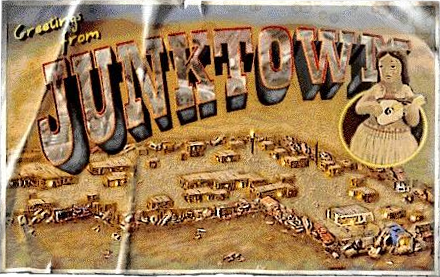
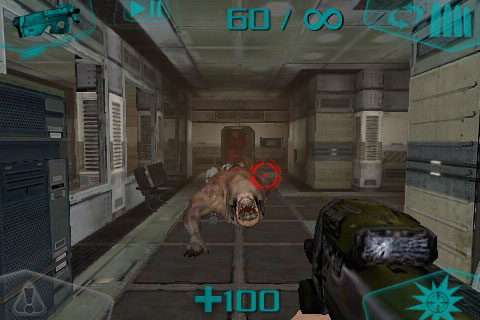

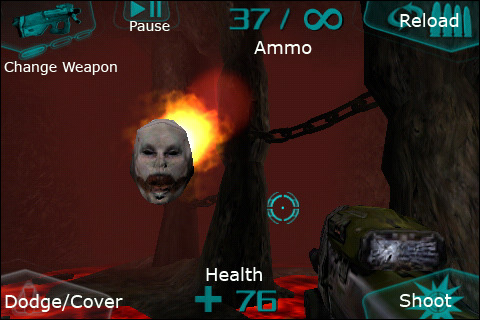
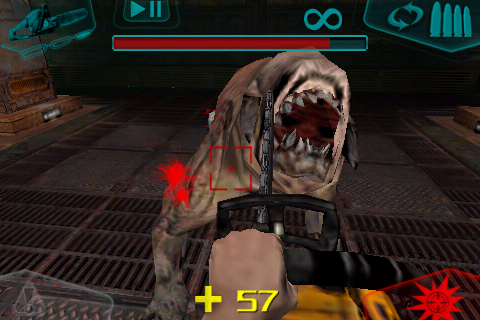
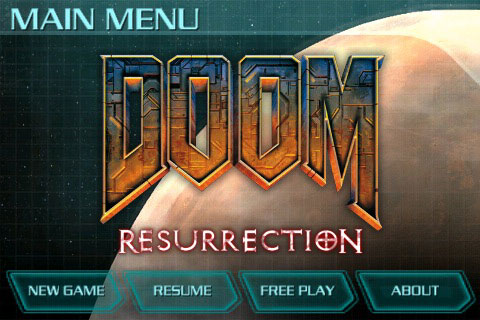


 Game Design Companion: A Critical Analysis of Wario Land 4 - $7.99
Game Design Companion: A Critical Analysis of Wario Land 4 - $7.99 Level Design: Processes and Experiences
Level Design: Processes and Experiences Speed Boost: The Hidden Secrets Behind Arcade Racing Design - $5.99
Speed Boost: The Hidden Secrets Behind Arcade Racing Design - $5.99 Adventures in Games Analysis: Volume I - $5.99
Adventures in Games Analysis: Volume I - $5.99







